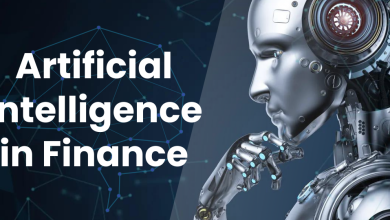
Can e-commerce businesses make big money using AI?
The short answer: Yes, they can.
The long answer: Let’s dive into that a bit more.
AI isn’t just some buzzword people toss around to sound impressive. It brings real results. Take companies using AI as an example, they see revenue grow by about 10 to 12 percent on average. That’s actual, cold, hard cash making a real difference in how e-commerce businesses succeed.
The e-commerce world has grown far beyond the simple online catalogs we used to know. AI has changed things, shaping a whole new way people shop online. Just take a gander at these facts …
By 2032, experts project the AI market will hit $45.72 billion. Therefore, it’s not surprising that 84% of e-commerce businesses are making AI a top priority.
What’s even more exciting is AI’s potential to do more than just drive up sales figures. Retailers are now using it to create personalized shopping experiences tailored to each shopper. And you know what? This strategy is already making positive waves with retailers enjoying as much as a 40% increase in revenue with this strategy.
Even if you aren’t the biggest fan of AI, you can’t overlook numbers like these.
This article digs into how AI is quietly helping e-commerce stores rake in more cash in 2025. It also explains how AI has shifted from being a “nice perk” to a game-changing tool for driving results. We’ll also uncover new ways it’s pulling in revenue and discuss easy tips to get AI working for you without overhauling your tech.
Let’s jump straight into it …
How AI went from a tool to a real business force
Remember when AI was used for small tasks like automated email reminders (looking at you, Gmail)? Well, those times are long gone.
AI plays a key role in driving businesses forward. It has also been proven to have a direct effect on revenue and gives companies a strong edge over competitors. This isn’t just about small changes either …
Businesses using AI strategies are making around 10-12% more revenue on average. That number alone shows how businesses now see AI as a revolutionary tool.
Shifting from task completion to delivering results
If you look at how AI has grown, it’s impressive. It’s no longer about following fixed instructions. Modern AI systems create results for businesses.
For example, companies using AI agents report a 76% rise in how they operate while also seeing notable growth in revenue. That’s not just about being efficient for its own sake. It’s about turning efficiency into profit.
Today’s AI tools dive into patterns in customer behavior, preferences, and market trends. They guide choices that have a direct effect on business earnings.
Let’s take a look at AI-based recommendation engines as one example. They increase online sales by as much as 15% and make customers happier at the same time. But there’s even more they can do.
These tools also:
- Predict what shoppers might buy next
- Create personalized experiences on a larger scale
- Adjust prices to match market changes
AI makes personalization better by creating a helpful cycle. It gives people a good experience, collects more data, and uses that to make personalization even better. This process keeps innovation moving forward.
How AI is shifting e-commerce business models
AI doesn’t just make old business models work better. It also helps create brand-new ones.
Take McKinsey research as an example. Businesses using AI saw logistics costs drop by 15%, inventory shrink by 35%, and service improve by 65%. These results are impressive and prove that AI changes more than just one area. It influences the entire business.
Another breakthrough? Pairing AI with advanced inventory management software drives even greater efficiency. Now, dynamic pricing gets smarter by tracking real-time market rates, inventory, and seasonal demand, streamlining how companies adapt and maintain the right stock at the right time.
Also, another tool tied to the rise of AI, the global chatbot market is set to expand and could hit $3.99 billion in the next five years. These digital assistants take care of simple questions, letting support teams focus on trickier problems that need more extensive troubleshooting. Using both chatbots and human staff together also means businesses can offer help around the clock without hiring people for late-night shifts.
But let’s get to the real point. While tools like chatbots and flexible pricing are valuable, there’s a bigger reason why this change is so significant.
AI has shifted from being a nice-to-have advantage to something businesses can’t function without, and here’s what makes this matter so much:
Tailored experiences are the standard now. Businesses need AI to keep up with efficiency, scaling, and meeting customer demands. Relying on outdated tools while others use AI to provide better services means falling behind. That is why adopting AI has become essential.
The new paths to income AI is opening up
By 2025, all thriving e-commerce businesses will share one key thing: new income sources created by AI. These are not minor updates or tweaks. They are major additions that boost profits.
Using advanced strategies to bring back abandoned carts
Here’s something annoying … about 70% of shopping carts online get abandoned. Just think about it – 70%. That’s like leaving a big pile of cash right outside your storefront.
But this is where AI steps up in a big way …
Instead of relying on those boring “Hey buddy, you forgot to buy this thing” emails that show up hours later (and let’s be honest, the customer is onto something else by then), AI acts fast. Even cooler? It watches how each shopper behaves in real-time and figures out how to bring them back while they’re still interested. It’s like a stalker with good intentions.
Timing matters the most, doesn’t it? AI knows how to pause the perfect amount before sending messages tailored to each customer. It skips the generic approach and creates personalized recovery steps that adjust depending on how people react.
And guess what? Companies using AI for cart recovery boost their revenue by as much as 20%.
That’s taking money that could’ve slipped away and turning it into actual profit. What business wouldn’t be happy about that?
Using real-time detection to cut fraud losses
Fraud costs a lot. On average, businesses lose 5% of their revenue to different types of fraud. Here’s the shocking part … most of it goes unnoticed for an entire year before anyone figures it out.
AI fraud detection changes everything. These tools process large amounts of transaction data in real-time and pick up strange patterns that people might miss. What’s cool is they become smarter with every transaction, improving how they work. The financial benefits are no joke.
Companies using AI fraud solutions reduce their cost-per-order by 55% and cut false positives by 70%. This means fewer real customers getting flagged, which helps both businesses and their customers. It’s a win-win.
Using first-party data to improve ad targeting
As third-party cookies become a thing of the past, first-party data is turning into a powerful tool to grow your business in a reliable way.
Pairing this data with AI opens the door to some amazing possibilities, like …
- It enables audience segmentation based on real customer actions instead of assumptions.
- It tailors creative content to match personal tastes and interests.
- It uses patterns in customer behavior to predict the best offers for them.
The results back this up. Businesses that combine first-party data with AI report making their ad budgets work five times harder, tripling their ad click-through rates, and boosting conversion rates by 73%.
The real advantage comes from linking data that used to exist in separate systems. When AI connects it all, basic customer details turn into valuable intel. These insights help improve results in areas like audience targeting, bidding plans, and channel management.
Guesswork won’t deliver that kind of outcome.
Final thoughts
AI isn’t just some trendy tech idea anymore. It has become a must-have tool that shapes your business success.
The e-commerce stores using AI are already ahead of the curve. The real question now is whether you’ll join their success or stay on the sidelines and watch. In 2025, AI isn’t just changing how stores succeed. It’s defining what success looks like.




